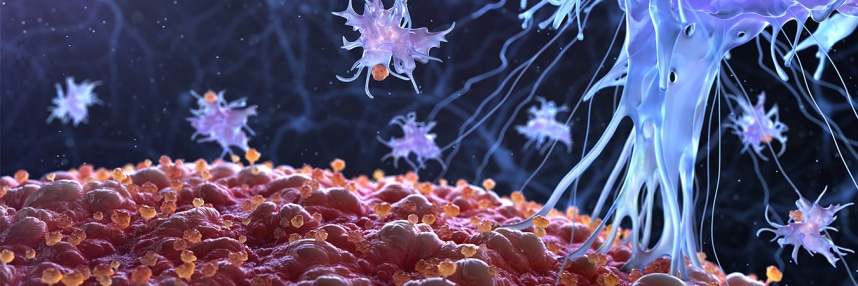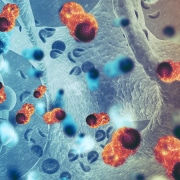Genomic trigger found for inflammation
Could we ‘turn off’ our body’s unwanted immune responses? New research has found a genetic switch in our non-coding DNA that could help treat complex allergic disease
A recent study has identified a potential genomic target for the development of new therapies to treat inflammatory and allergic diseases.
The research, led by the Babraham and Wellcome Sanger Institutes and published in Nature, looked into the non-coding area of the genome, and specifically chromosome 11, to find answers about why certain individuals are more likely to be affected by complex allergic diseases.
The study found that the enhancer responsible for regulating the function of a gene, LRRC32, could be a trigger for immune responses in the body, allowing for the potential reduction or elimination of inflammation in treatment.
What is inflammation?
Inflammation is a normal part of the body’s response to multiple types of harm, including infection by bacteria and viruses, cell damage from injuries, or burns and irritation from sources like allergens or friction. It is also a key component of allergies and complex autoimmune diseases, including asthma, type 1 diabetes, Crohn’s disease and ulcerative colitis.
When the body detects harm, blood vessels dilate and bring immune cells and molecular mediators to the site to fight infection, remove damaged cells and begin repairing tissue. Symptoms include heat, pain, redness, swelling, and loss of function in the affected tissues.
An underactive inflammatory response could allow infection to continue or cause tissue to be compromised by necrotic damaged cells. In conditions such as asthma and some types of arthritis, the inflammation itself can become chronic and cause harm.
The genome and atopic disease
Longstanding medical observation indicates that atopic diseases (those allergic diseases with a tendency to be genetically inherited) such as asthma, eczema and hayfever, as well as diabetes and inflammatory bowel diseases, tend to run in families. None, however, present a straightforward pattern of heredity, indicating that many genes are involved, as well as environmental factors.
Genomic approaches have been used to find out why some people are more susceptible to complex autoimmune and allergic diseases than others, and genome-wide association studies on large-scale datasets have indicated that a specific region on chromosome 11 has a significant part to play, notably in cases of asthma, colitis and diabetes.
These studies were not as successful in identifying genes that could act as drug targets, however. Much of the variation that correlated to differences in inflammatory diseases were not found within the genes in the region, but rather in the non-coding regions, which were less well understood.
The trigger for immune response
New research from the Babraham and Wellcome Sanger Institutes focused on the non-coding DNA in the chromosome 11 region, and discovered an enhancer sequence that acts as a genetic switch to control immune responses.
Enhancers are regions of DNA that help to regulate the expression of genes. They can be located some distance away from the gene they regulate, making it difficult to work out how variation in these domains is linked to associated disease outcomes. In this case, an enhancer for the LRRC32 gene, which encodes for the glycoprotein-A repetitions predominant (GARP) protein, was identified.
Regulatory T cells (Tregs) are a subtype of white blood cells that suppress immune responses by other cell types. As such, they are important in preventing autoimmune disease and allowing the body to tolerate its own antigens.
When the enhancer was knocked out in mice, the GARP protein was not produced in the Treg cells, which were then unable to prevent inflammation in the colon lining. When running a comparison with the findings in human blood cells, the researchers were able to see that variations in the enhancer sequence were associated with reduced expression of the GARP protein. The authors concluded that the LRRC32 gene and its enhancer are a potential therapeutic target for the treatment of inflammatory diseases.
–








